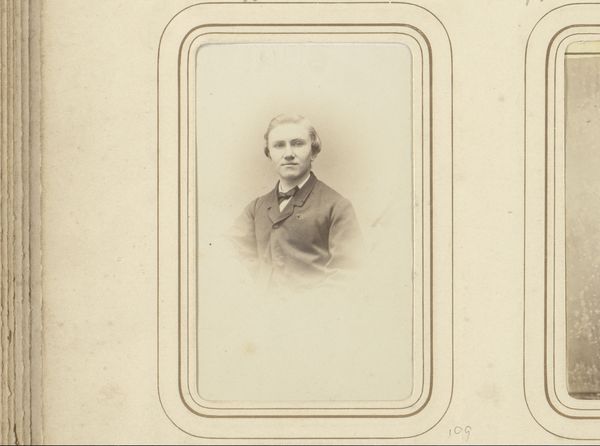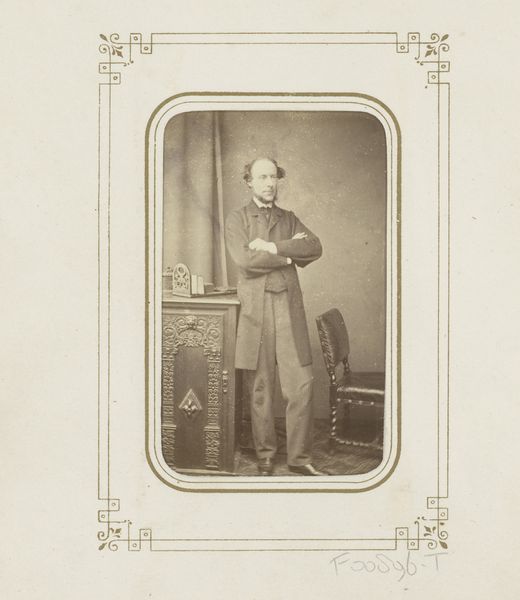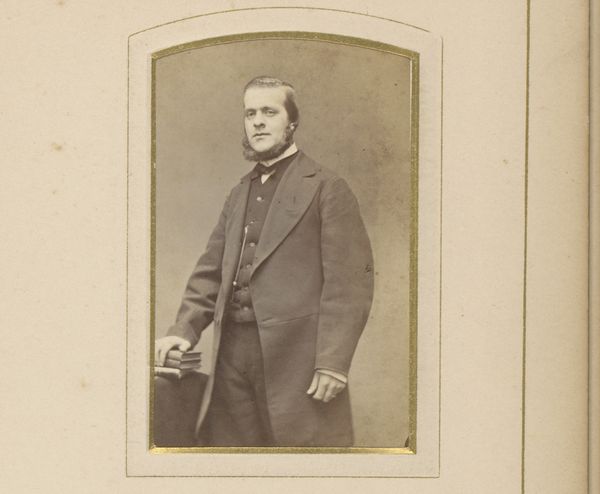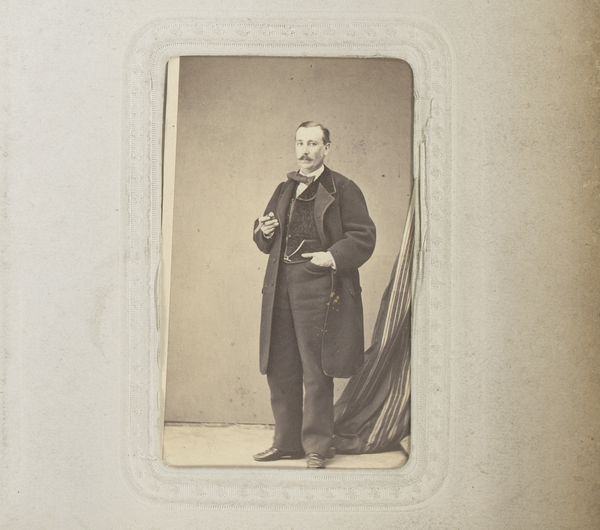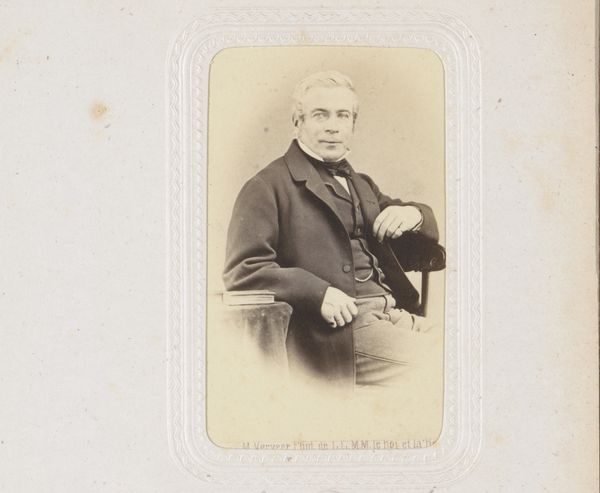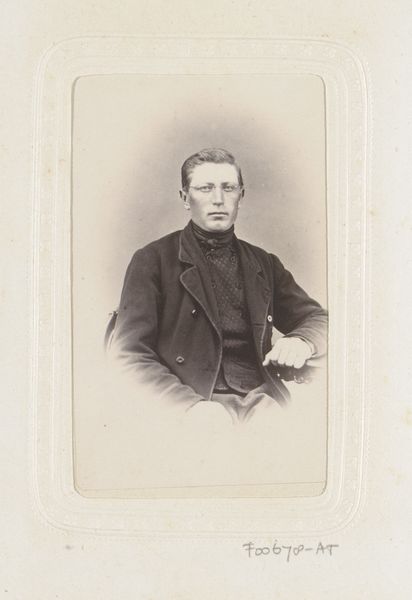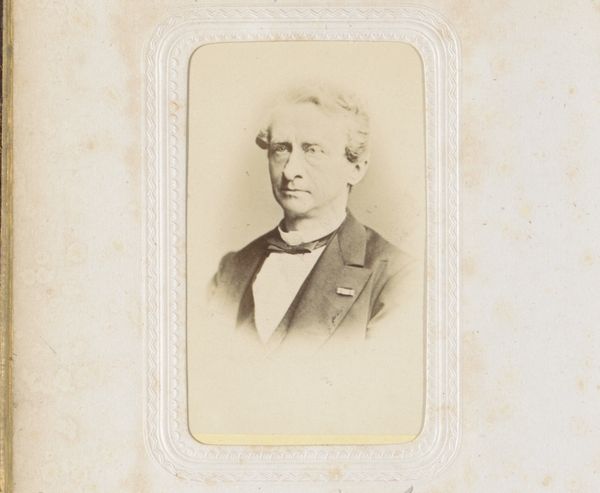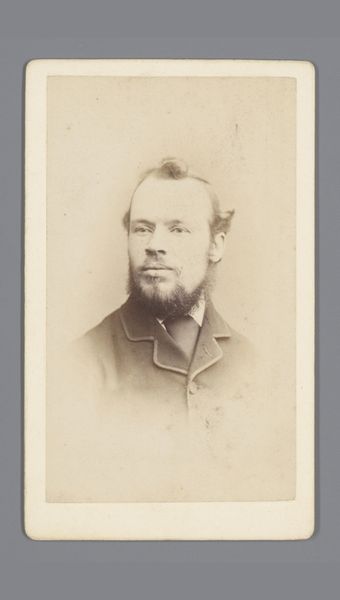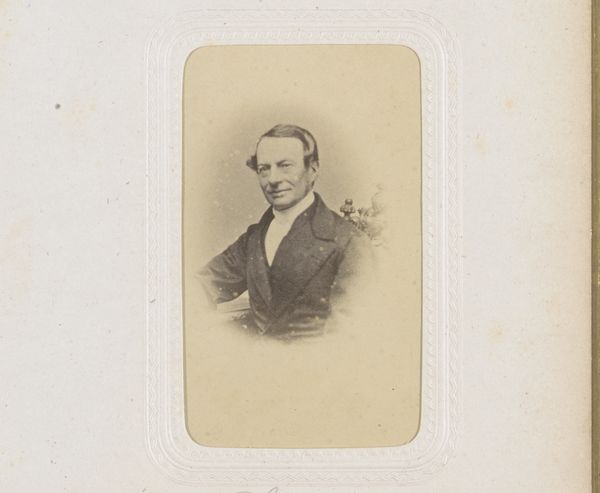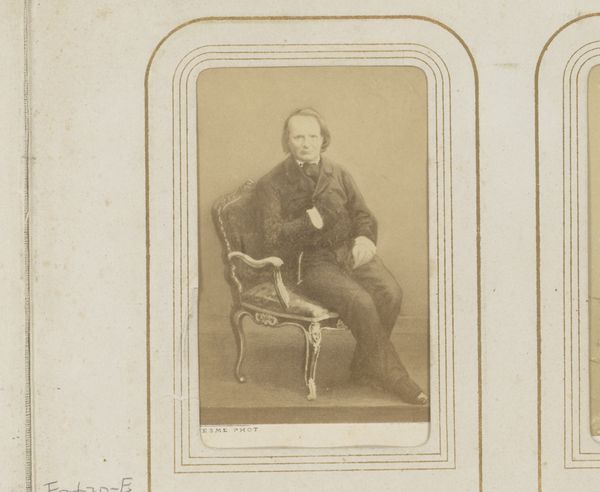
Portret van een zittende man, aangeduid als O.A. Uhlenbeck Possibly 1867 - 1869
0:00
0:00
photography, albumen-print
#
portrait
#
photography
#
19th century
#
albumen-print
Dimensions: height 82 mm, width 50 mm
Copyright: Rijks Museum: Open Domain
Editor: Here we have a photographic portrait from possibly between 1867 and 1869, credited to Wegner & Mottu. It's an albumen print, portraying a seated man identified as O.A. Uhlenbeck. It has such a formal, reserved feeling. What stands out to you about this portrait? Curator: Beyond the formal attire, typical of the era, I see a conscious construction of identity through the lens. The sitter’s gaze, averted yet self-assured, and the meticulous detail in his grooming speaks volumes. This isn't just a representation; it's a carefully curated image intended to convey respectability and intellectual weight. Do you notice how the oval format isolates him, almost like a cameo? Editor: Yes, it does lend him an air of importance. Are there other symbolic elements that resonate with the cultural values of the time? Curator: Absolutely. Photography itself was still a relatively new medium, imbued with a sense of almost magical realism. Think of it: to have your image captured and preserved was a powerful statement of presence, status, and legacy. The fact that it is a physical object too – the albumen print – gives it even more resonance with the tactile quality that signifies permanence and inheritance. What feelings do these details evoke for you? Editor: It gives me the sense of looking at someone who’s acutely aware of how he will be perceived, both then and potentially now. There's almost a burden of representation. Curator: Precisely. These early photographic portraits served as powerful visual testaments, laden with cultural significance that we continue to decode. They bridge the gap between the personal and the historical. Editor: It’s amazing to think about how much can be gleaned from one image, even today. Curator: Indeed. It serves as a potent reminder of photography’s role in shaping not only how we see the world, but how we remember it, too.
Comments
No comments
Be the first to comment and join the conversation on the ultimate creative platform.
